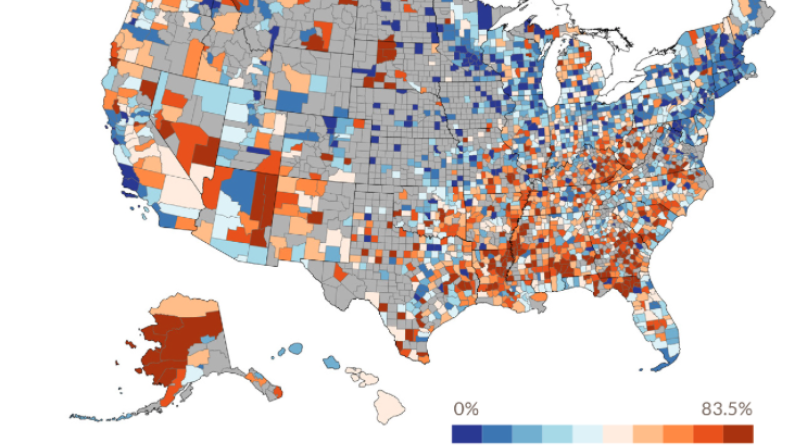County Health Rankings show spike in drug overdose deaths among young

The 2017 County Health Rankings are out, measure rising drug deaths among young people
Young people dying from drug overdoses is driving up premature death rates across the country, according to recently released findings from the 2017 County Health Rankings & Roadmaps report.
The rankings and data from the recently released report are meant as “a jumping off point” for county leaders to see where they’re doing well and where they need help when it comes to the health of their residents, said Abbey Cofsky, managing director of the Robert Wood Johnson Foundation, which collaborates on the rankings report with the University of Wisconsin Population Health Institute.
Learn More
Drug overdose deaths continue to be a big problem. “We’re continuing to see premature deaths of 25- to 44-year olds, in the prime of their life, in their most productive years,” Cofsky said. The rate of overdose deaths has increased 137 percent since 2000, according to the Centers for Disease Control.
From 2014 to 2015, 85 percent of the increase in premature deaths can be attributed to a sharp increase in drug deaths among Americans 15 to 44. Drug deaths are also accelerating among 15- to 24-year-olds.
Suburbs, once ranked lowest in drug deaths, are now the highest, the report shows. A decade ago, suburbs had the lowest rates. Smaller metro and rural areas are also witnessing higher fatal drug overdose rates.
Counties have to ask: “What is it that’s happening in our communities that’s fueling this epidemic?” Cofsky said. “Communities can make a difference, she said, by asking “What does it take to create opportunities to prevent drug overdoses?"
Socio-economic factors in a county will have the biggest impact on the health of a community, said Julie Willems Van Dijk, County Health Rankings director.
Instead of focusing on end problems such as obesity or smoking, counties are now looking at supporting resources such as truancy intervention, early childhood programs, employment and housing that provide at-risk students and families with a foundation to improve self-esteem, social skills and unmet needs.
“This goes to the core of the rankings — communities and counties can actually do something about the issue if they couple it with what’s happening on the ground,” Cofsky said.
Disconnected Youth
A new measure introduced in this year’s Rankings report focuses on young people (ages 16 to 24 who are not in school or working) lacking opportunity.
Nearly 5 million young people in the United States — one in eight — fall into this category, according to the report. Rates of youth disconnection are higher in rural counties (21.6 percent), particularly in the South and West, than in urban ones (13.7 percent).
“There are not a lot of measures that look at that population,” Cofsky said. “It goes again to the core of what the rankings are about. There are ways to prevent that. It’s not always going to happen at home or at school. It’s the community, social support, safety. It raises the questions: ‘What are the job opportunities? After school programs? Do they have a safe place to live?’ What’s happening to provide this support?”
Ideally, a county will look at the data from the Rankings report and ask “Why do we rank this way? Why is the data increasing or decreasing?” Cofsky said. “It prompts them to take a closer look at the data, to bring leaders from different areas together, from social services, housing, transportation and education. That’s really the hope, the starting of a conversation.”
“Health is local,” she said, “there’s an enormous amount that can be done.” Find information about your county at www.countyhealthrankings.org and click on your state. This is the eighth year the Rankings report has been issued.
Attachments
Related News

USDA and HHS release new dietary guidelines
On January 7, U.S. Department of Agriculture Secretary Brooke Rollins and U.S. Department of Health and Human Services Secretary Robert F. Kennedy, Jr. unveiled the new Dietary Guidelines for Americans, 2025–2030.

SAMHSA cancels, reinstates thousands of behavioral health grants
Late on Wednesday, January 14, the Administration announced that thousands of Substance Abuse and Mental Health Services Administration (SAMHSA) grants that had been terminated just one day earlier would be reinstated.

House passes three-year extension of ACA Enhanced Premium Tax Credits
On January 8, the U.S. House of Representatives passed legislation to extend enhanced Affordable Care Act (ACA) premium tax credits (EPTCs) for three years, sending the measure to the Senate as lawmakers work to negotiate a bipartisan compromise.
